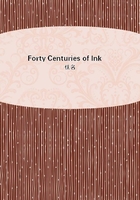
第97章
"At the foundation of Winchester College, one or more transcribers were hired and employed by the founder to make books for the library. They transcribed and took their food within the college, as appears by computation of expenses on their account now remaining. But there are many indications that even kings and nobles had not the advantage of scholars by profession, and, possessing few books of their own, had sometimes to borrow of their more favoured subjects."We learn from another source that the great not only procured books by purchase, but employed transcribers to make them for their libraries. The manuscript expense account of Sir John Howard, afterwards Duke of Norfolk, shows in 1467, Thomas Lympnor, that is Thomas the Limner of Bury, was paid the sum of fifty shillings and two pence for a book which he had transcribed and ornamented, including the vellum and binding. The limner's bill is made up of a number of items, "for whole vignettes, and half-vignettes, and capital letters, and flourishing and plain writing."These transcribers and limners worked principally upon parchment and vellum, for the use of paper was by no means extensive until the invention of the art of printing. Some of the old manuscripts contain drawings representing a copier or transcriber at work, where the monk is represented as provided with a singular and tolerably complete set of apparatus to aid him in his work. The desk for containing the sheet or skin on which he is writing, the clasp to keep this sheet flat, the inkstand, the pen, and the knife, the manuscript from which the copy is being made, the desk for containing that manuscript, and the weight for keeping it in its place,--all are shown, with a clearness which, despite of bad perspective, renders them quite intelligible.
Of the two substances, parchment and vellum, before the invention of paper, another word or two may be said. Parchment is made from the skin of sheep or lambs; vellum, from that of very young calves (sometimes unborn ones), but the process of preparing is pretty much the same in both cases. When the hair or wool has been removed, the skin is steeped in lime water, and then stretched on a square frame in a light manner. While so stretched, it is scraped on the flesh side with a blunt iron, wetted with a moist rag, covered with pounded chalk, and rubbed well with pumice stone. After a time, these operations are repeated, but without the use of chalk; the skin is then turned, and scraped on the hair side once only;the flesh side is then scraped once more, and again rubbed over with chalk, which is brushed off with a piece of lambskin retaining the wool. All this is done by the skinner, who allows the skin to dry on a frame, and then cuts it out and sends it to the parchment maker, who repeats the operation with a sharper tool, using a sack stuffed with flocks (wool or hair) to lay the skin upon, instead of stretching it on a frame.
Respecting the quality, value, and preparation of parchment in past ages, it is stated in the "Penny Cyclopaedia" that parchment from the seventh to the tenth century was "white and good, and at the earliest of these periods it appears to have nearly superseded papyrus, which was brittle and more perishable. A very few books of the seventh century have leaves of parchment and papyrus mixed, that the former costly material might strengthen and support the friable paper. About the eleventh century it grew worse, and a dirty colored parchment is evidence of a want of antiquity. This may possibly arise from the circumstances that writers of this time prepared their own parchment, and they were probably not so skilled as manufacturers. A curious passage from a sermon of Hildebert, Archbishop of Tours, who was born in 1054, is a voucher for this fact. The sermon is on the "Book of Life," which he recommends his hearers to obtain:
'Do you know what a writer does? He first cleanses his parchment from the grease, and takes off the principal part of the dirt; then he entirely rubs off the hair and fibres with pumice stone; if he did not do so, the letters written upon it would not be good, nor would they last long. He then rules lines that the writing may be straight. All these things you ought to do, if you wish to possess the book which I have been displaying to you.'
At this time parchment was a very costly material.
We find it mentioned that Gui, Count of Nevers, having sent a valuable present of plate to the Chartreux of Paris, the unostentatious monks returned it with a request that he would send them parchment instead."